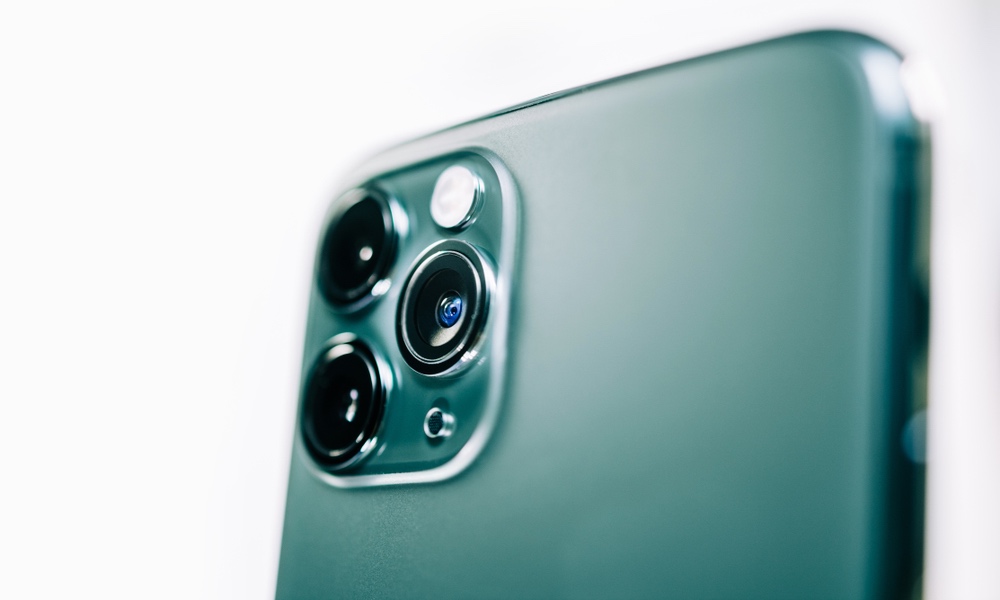
The iPhone 11 and 11 Pro are by far the best iteration of Apple’s popular smartphone series. They’re fast, durable, and beautiful to look at it.
It’s not all beauty and brains, though. The new iPhones pack an upgraded arsenal of tools and features. Especially the Pro model, which features better water resistance, a better display, and an all-new camera module that sports three different lenses.
That’s right; the iPhone 11 Pro has a total of four cameras. A front-facing FaceTime camera, a standard wide camera, a telephoto lens, and now, an ultra-wide camera so users can pull back to get the perfect shot.
It’s probably safe to say the cameras are the star of the show, but this one supporting feature may be even better.
Connecting People
Before the days of iOS and Android, flip phones and brick phones ruled the market. Sure, smartphones were on the rise, but they were expensive devices that only businesspeople and nerds bought.
One phone manufacturer was a household name, and it wasn’t Apple. Their slogan was “connecting people,” but it probably should’ve been something like “our phones don’t die.”
If you haven’t caught on already, the company I’m talking about is Nokia. They had phones in every color, fun games like “Snake,” and with [70% of the market] at its peak, the company seemed unstoppable.
Of course, iPhone and Android phones proved Nokia wasn’t unstoppable, and the rest is history. But, there’s always one thing people still miss about their Nokia phones: they didn’t die.
The Phones That Wouldn’t Die
While old phones weren’t invincible, compared to today’s fragile slabs of glass, they seemed to take more of a beating. But in addition to being durable, another thing that never seemed to die was their batteries.
I remember going several days (or even more than a week) before having to charge my phone; and for people older than me, who rarely used their phones, that number could’ve been much higher.
Of course, comparing smartphones to the cell phones of yesterday isn’t exactly fair. It’s a bit like comparing apples to oranges, really. Sure they’re both fruit, but they’re not the same. Smartphones do more, they’re thinner, and they have humongous touch screens. This results in smaller batteries and more power consumption.
In a way, smartphones are actually better when it comes to battery life; it’s just that they’re used a lot more and do a lot more. Put your iPhone into low power mode, uninstall all of your apps, dim the display, and only use it for an occasional call or text, and you might get similar results.
Even durability is relative. Old phones weren’t water-resistant—although a bag of rice could sometimes bring them back from the grave. I had plenty of phones that went through the wringer. But, they were plastic bricks that didn’t do much. Our smartphones are expensive works of art that run our entire life. One crack and our world is (likely) doomed!
Relativity aside, there’s one feature everyone wants more than anything else: an undying phone. Better battery life and better durability. Great news, the iPhone 11 Pro has both.
Sleepless in Cupertino
The engineers at Apple have been hard at work, and the result is an iPhone that never sleeps. One of my favorite iPhone features – 3D Touch – was recently removed from the latest iPhones. But it’s changes like that, that give Apple more room for components like larger batteries. When coupled with more energy-efficient processors and better software, iPhone 11 Pro’s battery packs a surprising punch.
All Day Battery Life
Sure, it’s not the same multi-day battery supply you’d get from an old Nokia phone, but getting all-day battery life on a smartphone is a satisfying feeling.
For kicks and giggles, I decided to go all day without charging my iPhone. It was a workday, and I usually place my phone on the wireless charging mat at my desk while I work. When I’m driving, I use my car’s built-in wireless charging to keep my phone full. But not that day. I made sure to keep it far, far away from any power source.
I took my phone off of its charger at 8:00 AM that morning, and, to my surprise, it was still at 95% at 10:45 AM. That’s 2 ½ hours later!
Granted, I didn’t use my phone a lot that morning, but 95%? Crazy!
And it’s not like I didn’t use it at all. I checked emails, made phone calls, browsed the web, read the news—all the usual things you do on a Tuesday. Things that would drop my iPhone XS’ battery life to 80%, for sure.
It Just Keeps Going
Come 12:06 PM, and my phone was at 91%. How do I know this? Well, at this point, I started texting my wife, bragging about how great my battery is hoping to convince her to upgrade too (spoiler alert: it worked). It also provided a great log, so I could look back and give you a realistic idea of what to expect.
At 3:25 that afternoon, it had dropped to the 78% mark, and when I left work at 5:00 PM, I still had 72% left. So there was only one thing left to do: drain the hell out of it.
Game on
I watched YouTube, downloaded apps, streamed movies, and I played games. Lots of games. After all, I have Apple Arcade, might as well use it. Sure I played some basic games like Frogger and Mini Motorways. But I also played graphics-intensive games such as Oceanhorn 2 and Fortnite.
When midnight rolled around, it still had 18% left. At this point, I called it quits. The iPhone 11 Pro had passed the test.
Conclusion? It’s a Battery Rockstar
Apple wasn’t kidding about its improved battery life. While my usage is hardly scientific, it paints a good picture of how great this battery is. I played games and watched movies the following weekend, and in heavy use, it’s still just a battery. But it’s better than any battery available in any previous iPhones by a long shot.
Mileage may vary, but for me, it’s been fantastic. I’ve gone to bed many nights with my phone off the charger because it still had plenty of juice left in the tank. With wireless chargers in my home, car, and office, my battery rarely drops below 80%.
























